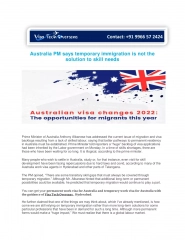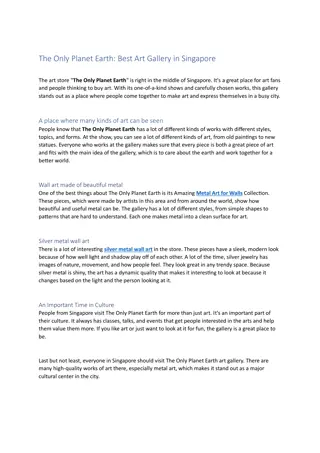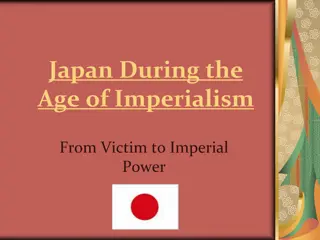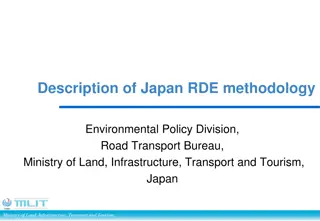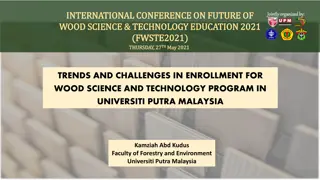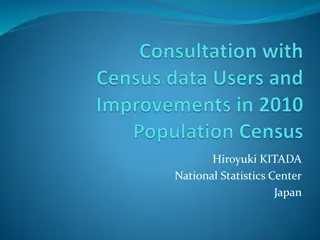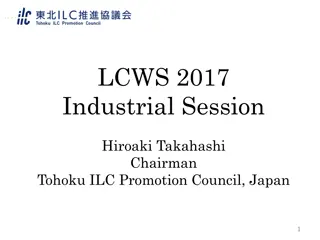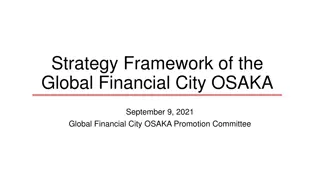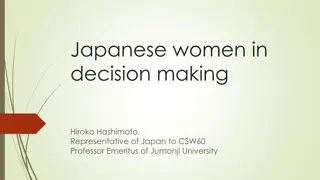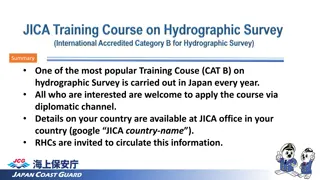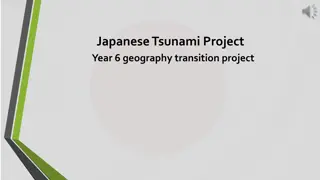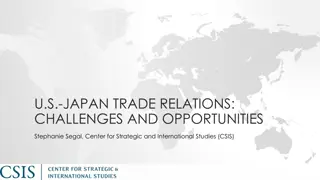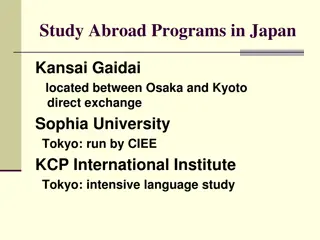Global Education Trends and Innovations in Australia and Japan
Explore how Australia and Japan are refocusing their education systems from local to international perspectives, aiming to develop global leaders through innovative curriculum rationales and new teaching approaches. Japan, once a technological powerhouse, is now prioritizing education for societal and economic growth, as exemplified by Aoba Japan International School's mission. The new curriculum rationale emphasizes core values of global leadership, entrepreneurship, effective communication, wise risk-taking, and problem-solving. Innovative teaching approaches include individual student profiles, data-informed practices, blended learning, coaching, mentoring, distributed leadership, and partnerships with universities for enhanced teaching and learning.
Download Presentation

Please find below an Image/Link to download the presentation.
The content on the website is provided AS IS for your information and personal use only. It may not be sold, licensed, or shared on other websites without obtaining consent from the author. Download presentation by click this link. If you encounter any issues during the download, it is possible that the publisher has removed the file from their server.
E N D
Presentation Transcript
Australia Refocusing the School from Refocusing the School from the Local to the International the Local to the International Ken Sell, Prof. David Lynch and Dr. Jake Madden 2017
Japan: A case study in global change Japan, once a powerhouse of technological innovation, has experienced stagnant economic growth over past decades. There is a reluctance on Japan s behalf to fully open its economy and society to the a fast changing globalized world. In recent years the Japanese Government has focused on Education as a key driver for social change and economic growth in the country. Japan Society for the Promotion of Science (2014); JASSO (2016); Jones, D. (2015, August 3); Jones, R. (2011); OECD (2012)
Aoba Japan International School Mission: A spirit of community shapes the A-JIS experience. We are dedicated to developing global- minded, compassionate, collaborative students inspired to learn, take risks, and lead positive change in the world.
A New Curriculum Rationale Core Value Global Leaders. Descriptor a mindset that enables others to initiate, lead, and participate in socially responsible actions. takes action through a holistic, balanced, and reflective framework. leads with an understanding of multiple perspectives related to physical, managerial, psychological, political, cultural, spiritual domains A core social responsibility discovery and application of knowledge and ideas to improve the human condition. innovates by generating and applying new ideas designed to impact on the world in positive ways imparting and exchanging ideas in a clear and concise way to produce desired results. active thinking and attentive listeners who offer ideas openly and weigh them against the thoughts and ideas of others with their integrity maintained. Entrepreneurs and Innovators Effective Communicators courage to attempt new and untested things in order to achieve their goals. discerning and analytical thinking to identify potential and manage risk. see solutions over problems, possibilities over obstacles, and probabilities over futility open-minded and see problems from multiple perspectives. analyze problems in order to understand, assess, and identify possible solutions. act on solutions that are designed to make the world a better place to live Wise Risk Takers Effective Problem Solvers
New Approaches to Teaching: 1. A focus on the individual and collective learning 1. Individual student profiles 2. Know thy Impact! 1. Data informed practice 3. Teaming to create capacity and enhanced capabilities 1. Embracing of Blended Learning 2. Coaching, mentoring and feedback arrangement 4. Distributed leadership Empowering teachers and their teams to make key teaching decisions Partnership with a University Joining forces for improved teaching and learning
A Model for Effective Teaching and Learning Maximizing Face to Face Teaching A student Learning Dimension Maximizing teacher understanding of their Impact A Teaching Dimension Lynch, et al, 2017
Where to start the journey? Project Readiness How ready is your school for whole of school reform and change?
Questions Australia
References Japan Society for the Promotion of Science (2014). Selection for the FY2014 Top Global University Project. Retrieved from https://www.jsps.go.jp/english/e-tgu/selection.html JASSO (2016). International Students in Japan 2015. Retrieved from http://www.jasso.go.jp/en/about/statistics/intl_student/data2015.html Jones, D. (2015, August 3). Japan rethinks unis in skills push, The Australian, Retrieved from http://www.theaustralian.com.au/higher-education/japan-rethinks-unis-in-skills- push/news-story/c41521b61d70e8d62b412d3d57b64d26 Jones, R. (2011). Education Reform in Japan, OECD Economics Department Working Papers, No. 888, OECD Publishing, Paris. http://dx.doi.org/10.1787/5kg58z7g95np-en Lynch, D., Fradale, P., Sell, K. and Turner, D., (2017). Towards an Effective Model for Whole of School Blended Learning: a conceptual paper. In publication process. OECD (2012). Policies for a revitalisation of Japan. Retrieved from https://www.oecd.org/general/50190618.pdf


